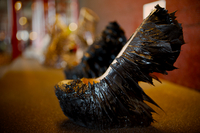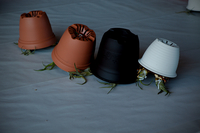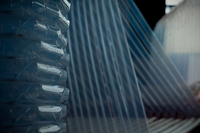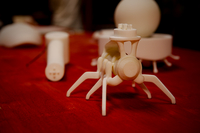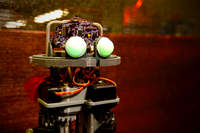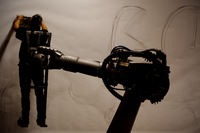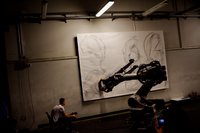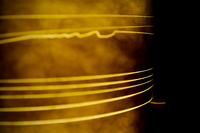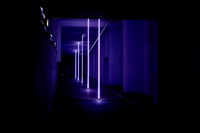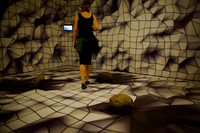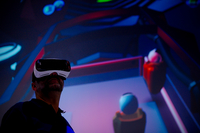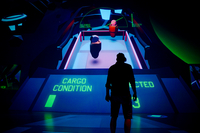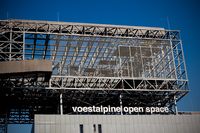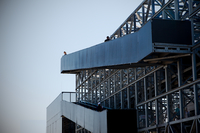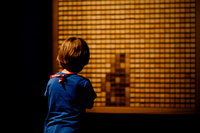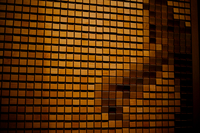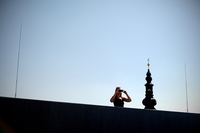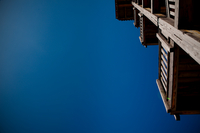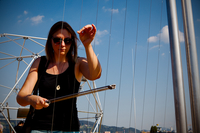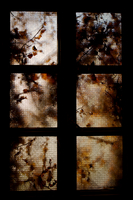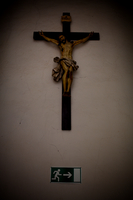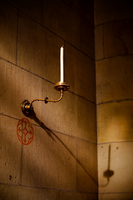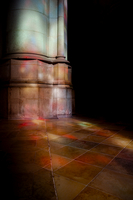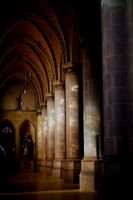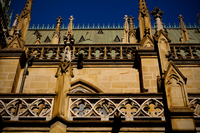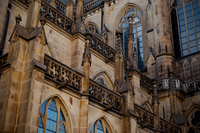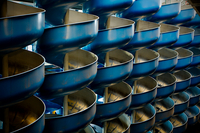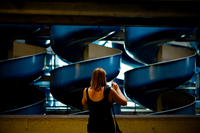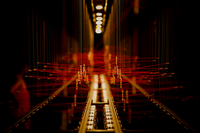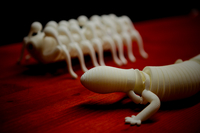| nostromos bLog | |||||
|
"bLog means boring-Log"
categories
* all entries (445)
* concerts (28)
* misc (120)
* techtalk (18)
* travel (241)
`-bruxelles_07 (8)
`-hongkong_09 (13)
`-iceland_10 (14)
`-ireland_16 (7)
`-newzealand_11 (5)
`-scandinavia_07 (22)
`-scandinavia_16 (17)
`-scotland_15 (11)
`-strasbourg_08 (4)
* zoo (38)
`-schoenbrunn (16)
chronology
|
Thu, 22 Sep 2016 tomtom spark 3 cardio + music (0 comments)
it was time for a new sports gadget, as lately i was growing unhappy with my current setup while running, consisting of a heart rate monitor belt, in-ear headphones with cable that are about to break every moment now, and the runtastic app on my mobile phone for gps tracking, heart rate monitoring and playing music. way too many cables and straps, also the runtastic app got worse for me with every update and lately it took ages to get gps working, and once it worked it did not do so reliably. so why not get rid of as much ballast as possible and pack it all into one new and shiny device?
after quite an amount of research i decided that the tomtom spark 3 cardio + music would be the best choice for me. here is why i thought so; it has an optical heart rate monitor that is embedded in the wristband; it has a mass storage device that can hold 3gb of (mp3) files; it does the gps tracking (that's what tomtom is best known for) and uses "quickgps" that should get it started faster; it has interval training support and you can get warnings if you are out of a customizable boundaries, such as heart rate zone range. as a bonus it is also water resistant to 40 metres, and it is controlled by just one button.
the only thing i was yet unsure about was how to transfer the information to my laptop and then to runtastic, as runtastic is known to be not so open to other sources of input rather than its own. thus a direct link was not possible. although there is a command line utility that enables communication with older tomtom watches this latest model was nowhere mentioned in the documentation.
but once the watch was unpacked, this problem was quickly solved. the watch automatically and effortlessly synchronises with my mobile phone via bluetooth, then transfers the data to the tomtom site at once. there i can export the data to various formats, such as tcx files, which then can be imported easily on the runtastic site. ha, now that was surprisingly easy.
for listening to music i bought wireless in-ear headphones. pairing them via bluetooth with either the watch or the mobile phone was a matter of a few seconds. the mp3 files can be transferred via the included usb cable, the watch itself shows up as a mass storage device, and can be mounted without any problems in linux. the files can be arranged in playlists using the m3u8 (m3u with utf-8) standard.
the only downside is the firmware upgrade management, which requires either a windows or a macintosh operating system. luckily, nina has the latter one. so once in a while i might have to borrow her macbook to hook my watch to it and install firmware upgrades. i do not think that would happen too often.
no more cables, no more straps - i am happy. a first test showed the gps really starts very fast; once the "quickgps" was updated via bluetooth and the smartphone, it took less than ten seconds to get full bars on the gps indicator, and the watch was ready to go - how awesome. i covered it with a lot of layers of cloth, and still the gps data was extremely accurate.
i think the watch might also serve as a mere gps tracker for my next holidays or photo trips, as you can disable all the other features of the sports tracker. on internet discussion forums i read the battery lasts up to eleven hours with these settings; i will try that as soon as possible.
top [ ^ ]
Sat, 10 Sep 2016 day 02 at the ars electronica festival (0 comments)
we started day 02 of the ars electronica festival in linz at the postcity[01-55].
first thing we did was to pay a visit to the "pie deck", an exhibition curated by the university of applied sciences in hagenberg, coordinated by our friend jake. at the playful interactive environment deck the movements of the participants are tracked via laser tracking devices and rendered in the virtual space. there they can interact with other participants - both real and virtual - in various new game concepts. also external sources like text or chat messages can be included in some games - very enjoyable and interesting.
after admiring some professional drone steering at the "aec drone lab"[01], we started our round tour through the huge building with its many hallways, halls, small rooms, staircases, and many more locked doors.
we were pretty fascinated by all the exhibits that dealt with fashion, like shoes from the "artist lab iris van herpen"[03-04]; or the "environment dress"[08-11], which was actually an awesome and amazing alien costume to me, that reacted to all kinds of input like brightness, noise, atmospheric pressure, etc, then calculated the hostility or friendliness of its environment, and raised or lowered the shields accordingly; or the "kinematics dress"[12], a dress that was entirely made in a 3d printer as a single folded piece. all of them pretty cool.
but also entire small houses can be 3d printed with concrete, as shown by the "artist lab marjan colletti"[05-07] - it takes a while, but the printing process does not need any human interaction, besides the refilling from time to time.
art with plants is shown in the "photosynthegraph"[14] installation, where a film is put on a plant's leave, so the dark areas lack chloroplasts, whereas the transparent areas leave the natural amount of chloroplasts. with chemical treatment, this effect gets visible, and thus enables the artist to "print" onto the leaves. easy concept, but looks great.
very, very cute were the "phytowalkers"[15], walking plant pots - great fun to watch, i would have wanted one of them for my home.
the thing in common for the origami like art from "ori*lab"[13] and the "single-stroke structures"[16] are repetitive patterns, which i found very pleasing and soothing. same applies to the lain pieces of hardware[17-19], from keyboards to mobile phones and other electronic gadgets, although i did not find any information on what installation or by whom this was.
we also came by the "ready to crawl"[20] creatures again. still cute and nice to watch.a whole room was dedicated to the "artist lab yoichi ochiai"[23], but no artist was around, and we just could not make out what all the installations were about, or how to interact with them. so we left, and entered a bigger room, housing the "implant"[24] installation, a huge tube with shiny reflecting things inside, that become alive when you rotate the tube and shine inside with two big flashlights. it should represent an enormously enlarged virtual nanobot tube that should fix corrupted dna strings.
we just arrived in time for a live performance of "roboaction(s) a1 k1"[25-30], where the artist is strapped to an industrial roboter. the roboter then determines the patterns to be drawn by the artist. nice idea, and interesting to watch.
noise generated by a vortex in a glass container, made audible through spiral pipes of the "chozumaki"[31-32]. amazing fog landscapes are generated by "brume"[33-34], which uses ultrasonic transducers to produce very thick fog clouds that emerge through a membrane of a black cube. lovely little fragile looking jellyfish are the artist for the "aurelia 1 + Hz"[35] installation, where the creator tries to communicate with the jellyfish via sound.
quite sadistic is the concept of "miserable machines: soot-o-mat"[38-39]. a mussel is attached to conductive wires and an indicator that scratches the surface of a cylinder. when an electrical current is applied to the mussel it contracts, resulting in a graph on the cylinder. a new stimulus is given every 20 minutes. after a certain amount of cycles, the mussel finally dies. poor mussels, who actually should represent human beings in the capitalism machine.
an installation without any biological elements is "f₂( )"[40], an audio-reactive installation that reacts to its environment, changing sound and light accordingly.
three black horns producing sound and soap bubbles are the main elements of "black hole horizon"[43-47]. each horn has a different pitch and also produces different sizes of the bubbles. the bubbles then float through the huge room, to finally burst once they touch the floor or wall.
"rotating lights"[48], is, as the name implies, an installation with five rotating systems, each equipped with neon lamps. they start rotating, slowly at first, then getting faster, and finally the power is turned off, so the rotation and light is gone.
when we walked into the really huge gleishalle - the hall where train wagons were un/loaded when this place was still in operation - a concert was held, namely the "gleishalle, a concert cycle"[50]. minimalistic soundscapes of recorded noises were interwoven to create really amazing songs. we sat down to enjoy the whole concert by the duo "tamtam", and it was worth it.
"sonic wilderness"[52-55] was another interactive installation that presented a new way of tracking precisely where the head of each participant (or to be more precise the ears) were, in what direction they were looking, and thus, how near or far they were from a source of sound. those sound sources where scattered all over the room, and i had to admit, it really was very precise and realistic.
then we had to head over to the aec, as jake had asked me to take pictures of a "pie" presentation by him later this evening. but before that we had a quick look at all the new exhibits, like the "active wood products"[57], that bends wood into predefined shapes, or the "infinite cube"[58], that shows seamless movements of reflective spheres.
as a preparatory work for tonight's "klangwolke" we attended a show in the "deep space"[56,59-67] about the spaxels[56], the flying drones, that will be flying over the danube tonight. there we got insight on how the drones get coordinated and programmed, what to take care of with such a high amount of drones and what further steps are necessary to get such a show going. very, very interesting.
a little later it was time for jake's performance. he presented the prototype of "cargo"[59-67], a vr game in which the main participants control a spaceship with vr headsets, while other spectators can join the team and act as collecting drones to bring resources to the spaceship it can then use to defend itself. a simple concept, yet it is a lot of fun to collect all the stuff as you can run around in the physical space that doubles as the virtual space around the spaceship.
after the "cargo" amusement, it was time for the spaxels, a combination of the words "space" and "pixels" in the "drone 100 - spaxels over linz"[68-72] show. as usual, at the klangwolke, the entire area around the main stage is massively crowded, so we could not get to the best spot for viewing. also it would have been way too late by now to get a good spot. so we gathered outside of the ars electronica center and watched from there. it was a very impressive and special performance. the show with the 100 drones was shown only once before in sydney.
once the crowd dissolved we ambled along the danube[73-75] to let the day unwind.
ars 16 was really a positive surprise to me, as it was quite astonishing, and more interesting that it was back in 2013. but maybe it also helped that this year we had more time to explore, and did not have to rush. or maybe it was the new location; postcity really is an interesting place with a lot of possibilities for such a big event. anyhow, it was great.
top [ ^ ]
Fri, 09 Sep 2016 day 01 at the ars electronica festival (0 comments)
it is september, so it is time for the annual ars electronica festival in linz. this year luckily nina and i got a free festival pass, so we decided to go and see what is new on the digital arts sector.
we started at the hoehenrausch[001-071], this year it is hosting the openspace[017,021-037] by voest alpine on the roof of the OK, "Offenes Kulturhaus". from afar it looks like a pretty impressive construction.
to get to this 120 ton steel structure, one has to go through the OK[001-004] itself, where again several exhibitions with the focus on angels and/or wings are displayed.
the openspace is full of steel struts, meshes, and mirrors[021-025,027-030,032-033]. pretty confusing at first, but an interesting and funny concept, once you get used to the optical bauble.
then there was the wooden tower[020,032,045,047] also located on the roof of the OK, which was already here in 2013, the last time we were here at the ars electronica festival. you really get a wonderful view over linz, but we were too lazy to climb all the stairs up again.
there are also loads of music instruments on the roof, such as strings[049-051,058-060] and organ[052-054] like sound machines. fun to play with and make some noise.
the tour then ends in the ursulinen church[005-008,061-071], and via the church's attic[066-069] we got back to ground level and left the fallen angel[006,071], and the church. i liked the crashed celestial being the most.
we decided to visit another church, namely the linzer mariendom[072-088], the biggest (but not the highest) cathedral in austria. the light shining through the huge glass windows in this gothic style church was amazing, turning some of the church floor tiles, walls and pillars into colourful canvasses.
after leaving the cathedral, we circled it once and had a look at the facade[084-088], the windows, spires, and gargoyles. then we took the bus to the main location of the festival. fortunately public transport is for free with a festival pass - how convenient.
we soon arrived at postcity[089-110], the old postal service's letter & parcel distribution centre, that is located not far from where i once lived[111]. the construction itself is not very beautiful as it mainly consists of concrete, but all the special postal equipment, like the huge parcel slides[092-093], conveyor belts and huge halls are impressive - i often wondered what it must have looked like when it was still in operation.
for the interactive part we chose to do some drone flying[089], which was interesting and fun, as nina and i both had not done this before; takes a while to get the hang of it.
it was already a bit late, and the location was about to be closed soon, so we roamed around the huge exhibition area swiftly.
as every year there was lots of cool, surprising, amazing, and funny stuff around. the first performance we saw at this years festival was "neighbor"[090-091], a nifty performance playing with the mixture of real and virtual, involving two dancing performers and two participants wearing virtual reality glasses.
then we entered a room to find the "interface I"[094-098] installation, an ever changing system, triggered by a geiger counter. interesting to watch all the parts constantly moving and being triggered by new measurements.
rather gross was the "terminal sulcus"[099] exhibit - a fridge lined with over 700 casts of human tongues. brrrr, not my thing.
a fictional work of art was the "(im)possible baby, case 01: asako & moriga"[100], showing the concept of how it might be for same-sex couples to have children. images of their children can be generated, where the bodies are rendered based on the couples dna samples mixed together. fascinating, but fictional; yet.
although we did not see a live performance for "alive painting"[101], we had a very nice chat with akiko nakayama, the artist creating beautiful pictures for the performance. she also elaborated on how she produces the colours she uses, all of them made from metals and minerals manually mixed together.
then there was "instruments of the afterlife"[103], and "a hipster bar"[104], the latter proving that nina is 99.8% a hipster - who would have guessed? also, who would have guessed i would top that score with an embarrassing 100% hipsterdom? me definitely not.
when we looked at a demonstration of "the physical mind"[105], where one gets squeezed by two fluffy oversized airbags, loudspeakers announced that the postcity will be closing now, so we moved towards the exit without having a closer look at various other exhibits. like a room fully lined with gold[106], or little animal roboters that were "ready to crawl"[107-108]. here we had a short chat with the inventor, hiroshi sugihara, explaining to us his concept to make the cute gecko crawl like a real one.
i tried to get a closer look at "sculpture factory"[110], but security guards were already urging people to leave, so there is just one picture of that, and no further information.
so we went to the central[112-115], that seemed to be just recently participating in the festival activity as a location; at least i do not remember it being involved the last time. being a former cinema, it was obvious they showed the animation movies handed in for the prix ars electronica there. awesome stuff and really great animations with top-notch techniques, and quite often good humour.
after that, we called it a day. tomorrow is another day, and so far the ars electronica festival was fun to attend. let's see what day two brings.
top [ ^ ]
|
||||
